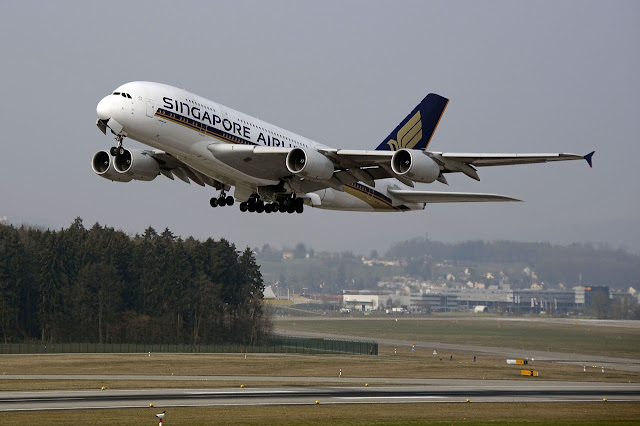aircraft
aviation
Flux temperature
Runway
Take off
What is Flex Temperature?
Flex Temperature or de-rated temperature
As it is not necessary that the cars should be accelerated at a particular speed, similarly it is not necessary that the aircraft should always take-off at its maximum thrust. As there is an optimal value of speed at which a car would give the maximum average, similarly to reduce the fuel consumption of an aircraft during take-off an optimal value of thrust is decided. Boeing calls this concept as de-rated temperature and most of the other airliners call this Flex temperature. This article deals with the step by step analysis of power setting during take-off and its relation with Flex temperature.
A commercial aircraft is not always applied with full power during take-off, although most of the smaller aircraft use full power to take-off. There is a sudden decrease in engine sound just after the take-off, which could easily be observed by a passenger sitting in it. This sudden decrease in the sound of the engine is due to the Flex temperature and climb power setting. Various factors are taken into account while performing take-off calculations. These calculations are done prior to every take-off. The pilot is provided with a load sheet containing all the important factors required for the calculations. ATIS (Automated Terminal Information Service) which is a recorded voice containing description about weather conditions and several other things to reduce the workload of ATC (Air Traffic Controller) is referred by the pilot for performing the calculations.
Entering fake air temperature to fool FADEC:
After the calculations, there would be some suggested values of Flex temperature along with the various take-off velocities for the particular Flex temperature. This article would help you to understand the various velocities involved during take-off. The pilot would choose one of the suggested values of Flex temperature and feed that value to MCDU (Multi Function Control and Display Unit). Now FADEC (Full Authority Digital Engine Control Unit) assumes that the outside air temperature is the one provided by the pilot. Actually, a fake value of outside air temperature is entered in the MCDU by the pilot, so that the FADEC reduces the power which would help in preventing engine wear. FADEC is actually fooled by the value of Flex temperature as it thinks that the outside air temperature is very high, therefore to prevent damage of the engine at such expected high temperatures it commands the engine to work at a reduced power.
 |
| FADEC |
Benefits of using Flex temperature:
TOGA thrust is the maximum thrust available with an aircraft to take-off. All take-offs should not be performed at the TOGA power setting as it results in more engine wear. The reason behind choosing the Flex temperature approach is to increase the engine life, which would reduce the chances of an engine failure. This approach of using de-rated power setting reduces fuel consumption as the fuel flow rate is less when Flex temperature is used.
Harms of using Flex temperature:
Use of Flex temperature is not allowed when runway surface is contaminated. The aircraft would be left with shorter stop distance in case of rejected take-off as in de-rated power setting the aircraft would be accelerated at a lower rate. The use of Flex temperature is also prohibited in the runways which are either at higher altitudes or which are short in length.
The concept of using de-rated power setting is actually how to balance shorter runway length in case of rejected take-off and engine life.
Thanks for reading!
Suggested article: How do pilot move aircraft from one place on ground to another?







